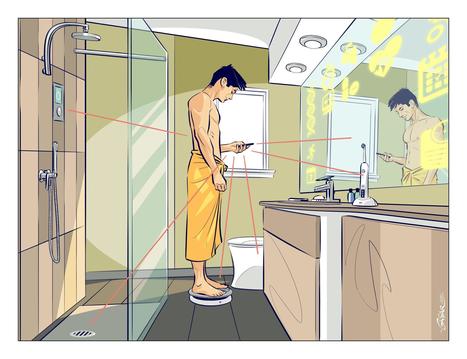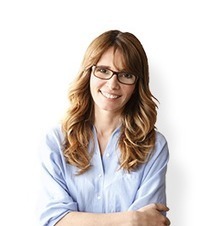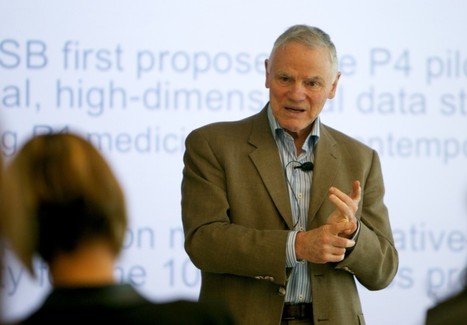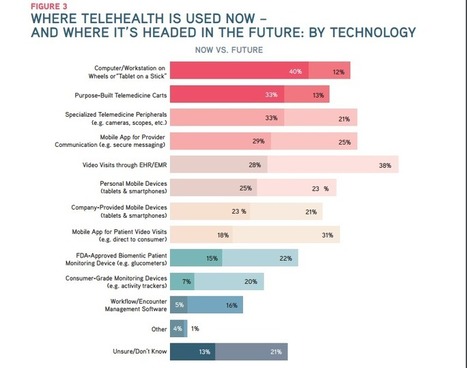Get Started for FREE
Sign up with Facebook Sign up with X
I don't have a Facebook or a X account

 Your new post is loading... Your new post is loading...
 Your new post is loading... Your new post is loading...
Deepak Chopra, a leading figure in the alternative health movement, is moving into the mobile app business with the launch of Jiyo. Chopra and his co-founder Poonacha Machaiah have been talking about Jiyofor a while, but today the app is generally available on iOS and Android. We got a quick demo yesterday, with Machaiah explaining that one of the goals is “no typing”. Using data from the sensors in your phone and other fitness devices, Jiyo gives you tips for brief tasks that are supposed to improve your well-being, like doing a stretch after a long flight, or meditations and other routines that might improve your sleep if you haven’t been sleeping well. The app includes social features, plus content from health and wellness experience like Dr. Dan Siegel, Dr. Mark Human, Kimberly Snyder and Eddie Stern. In addition, Jiyo is partnering with Gallup to offer a StrengthsFinder that helps users identify and reinforce their personal strengths, and it’s partnering with Mindbody to offer access to a wellness-related classes and activities.
Via Giuseppe Fattori
Mobile devices can now offer real insight into how, and why, your body is working the way it is
U.K.-based startup Babylon will launch an app later this year that will listen to your symptoms and provide medical advice. Will it help or hinder the health-care system? Via Julie O'Donnell
An origami pill is a fascinating glimpse into the future of incision-free surgery, one propelled in large part by magnets.
t’s estimated that wearables technology and remote patient monitoring technologies could cut hospital costs and save more than $200 billion. The use of wearable technology is still in its infancy but is growing at a rapid pace. 1 in 5 Americans now owns a wearable tech device. 56% of those consumers believe that the average life expectancy increases 10 years due to wearables monitoring vital signs. The future of wearables will not only help to cut healthcare costs for both consumers and employers, but can also provide numerous benefits for both insurance providers and subscribers. Long-term wearable tech benefits include real-time payment adjustments, health lifestyle rewards as well as the ability to track recovery from medical procedures. Via Giuseppe Fattori
As a science fiction fanatic, movies that speculate about the future and depict how robots will be used fascinate me. Some of them describe robots as dum
HIT Consultant Digital Health InnovationsAt HIT Consultant, we are always thinking about how digital innovation is impacting healthcare. As a result, we’ve compiled a list of innovations that have the potential to create greater change when it comes to the application and practice of healthcare in our series: HIT Consultant’s Selected Six Digital Health Innovations.Take a look at what we’ve chosen for May’s selected six, including a genomic search engine with fishy inspiration, a smartwatch that turns your skin into a touchscreen, and a thermometer 20,000 times smaller than a single human hair.
Via Alex Butler, Rémy TESTON
Popit Medical Technologies has launched a smart pill reminder device to help maintain maximal birth control efficiency, called Popit Sense.
Via Philippe Marchal
Popit Medical Technologies has launched a smart pill reminder device to help maintain maximal birth control efficiency, called Popit Sense.
Via Philippe Marchal
From
evisit
Whether you're considering telehealth or you already have a program up-and-running, here's how to address patient telemedicine questions.
Vital signs are key indicators of health. But tracking some of these signals, such as the body’s core temperature, can require invasive tactics—which is especially problematic for active or injured patients. Almost anyone, however, can swallow a pill.
Via Philippe Marchal, eMedToday 
John Maughan's curator insight,
June 10, 2016 9:27 AM
Inner Space 2 - we many not be able to miniaturize ourselves but we can do things today that were sci-fi in 1987.
The Department of Veteran’s Affairs has had a rough couple of years. The year 2014 saw the VA come under fire for an inefficient system that left tens of thousands of patients facing long waits for care with some even dying as a result.
|
Telehealth has yet to mature fully as a process and a system for controlling medical costs. However, the evidence documented in trials indicates that the impact of telemedicine on cost and quality of healthcare is positive. As a class of technology, telemedicine is not new; it has been around for many years, reflecting the communications technology of each era. Primitive forms existed in consultations for remote communities by telegraph and later by radio. The interactive nature of digital has made patients more involved in treatment delivery and more responsive to playing a role in their personal health outcomes. The technology enables diagnosis, gathering clinical information, and developing treatment plans. The studies reported here show that telemedicine has produced results that are competitive with in-person care and at less cost Via Giuseppe Fattori
Mobile devices can now offer real insight into how, and why, your body is working the way it is
From
www
Predicting Your Odds of a Disease: Program Aims Enable Doctors to Order Fewer Tests and Prescribe Fewer Antibiotics Via Julie O'Donnell
We’ve all heard about electronic health records, fitness apps for your smartphone, and wearable fitness trackers. Mobile health (mHealth) is no longer the new kid on the block. It’s here to stay, and now we’re moving into the phase where wearables are a part of the mainstream lifestyle.How many of your friends, family members or co-workers have a MapMyRun app on their phone, or are wearing a FitBit? Chances are, a lot of them. In fact, Forrester reported in 2015 that 20 percent of Americans have admitted to owning and using a wearable fitness device.
Via Alex Butler, Rémy TESTON
Good news: Arivale co-founder Leroy Hood says he can "almost guarantee" there'll be ways to keep yourself physically and mentally fit into your 90s.
I’m truly excited for the future of medicine – sometimes it feels like we’re living in a science -fiction novel. But genetic discrimination and the elimination of privacy are just some of the problems we’ll face if we let medical innovation run wild.
The major trial, backed by the US Government, found rats exposed to the type of radio waves emitted by mobile phones were more likely to develop tumours in their brains and hearts.
Popit Medical Technologies has launched a smart pill reminder device to help maintain maximal birth control efficiency, called Popit Sense.
Via Philippe Marchal
Once you've dragged yourself to work and back, it can be difficult to find the time or motivation to go to the gym. London-based gym 1Rebel has come up with a solution in the form of a fleet of buses converted into mobile spinning studios.
38% of executives most want their organizations to implement telehealth video visits through the EMR/EHR, and adopt mobile apps for provider-to-provider.
UnitedHealthcare has been offering video visits through Doctor on Demand and American Well for nearly six months now, since the start of the year.
|





























